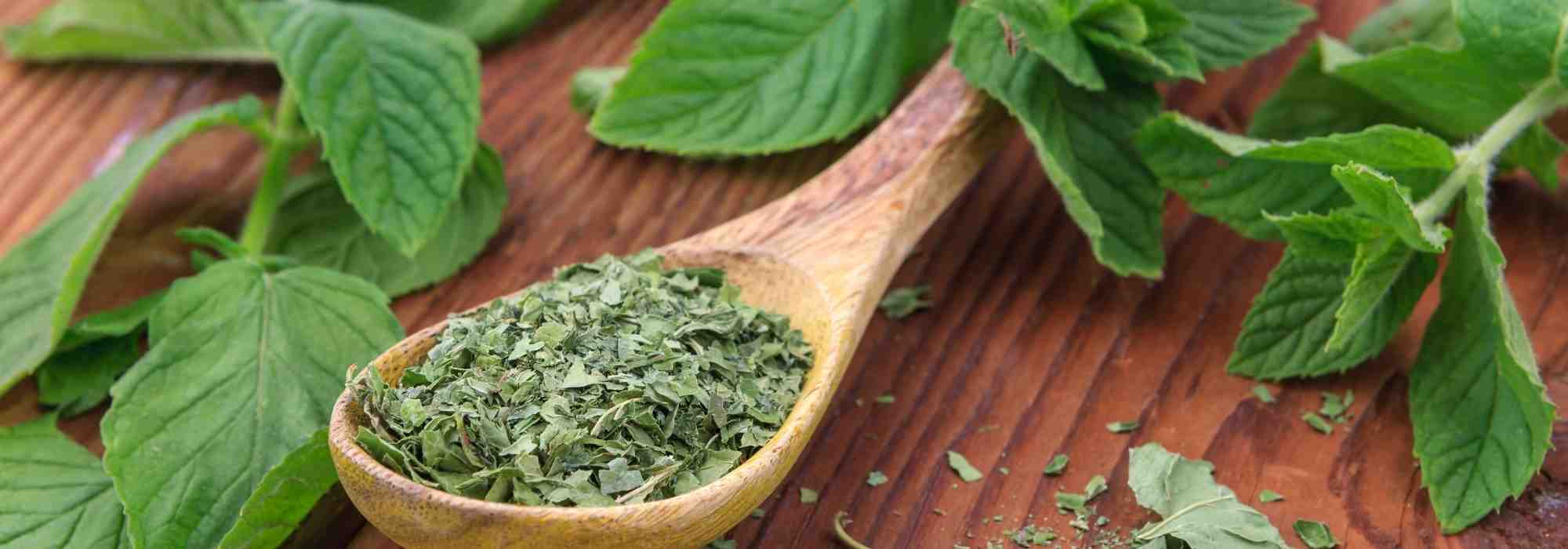
How to keep mint fresh?
All about storing fresh mint
Contents
Perennial aromatic plant renowned for its medicinal properties, mint is very easy to grow. Its fragrant leaves with a fresh taste are harvested from spring to autumn, before stems usually die back at first winter frosts.
But to enjoy the benefits and flavours of mint leaves all year round, it is perfectly possible to preserve fresh mint so you can use it even in winter.
The methods are obviously the same whatever the variety of mint: classic spearmint, peppermint, chocolate mint… Discover how to preserve mint for winter!
When and how to harvest mint to keep it fresh?
Optimal harvest period
Mint is harvested fresh as needed, generally April to October. Mint leaves are harvested preferably in the morning, or at least before noon, when they are richest in flavour.
Harvest for preserving mint over winter should be carried out at end of summer, just before flowering. You can still leave a few flowering stems in place, which will delight many insects and pollinators.
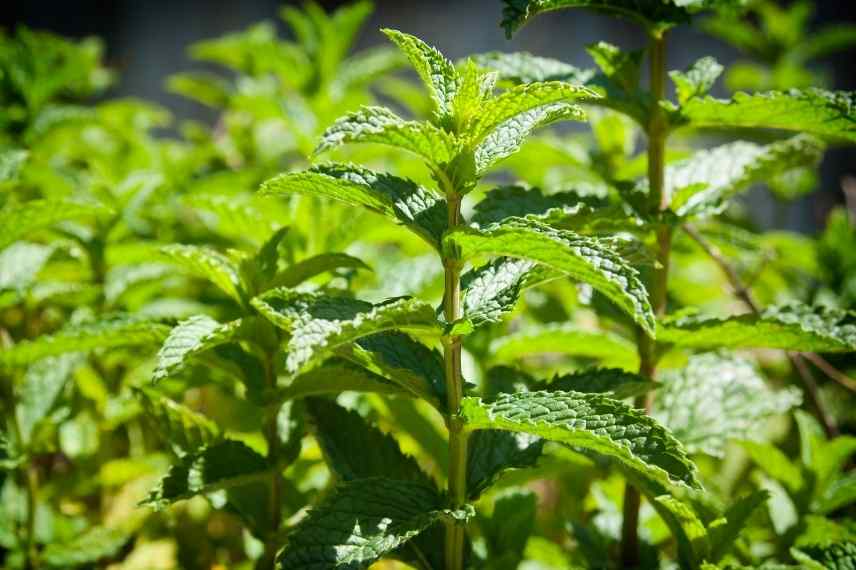
How to harvest mint?
Harvesting mint for fresh storage is very simple: pick leaves one by one from several branches or simply cut an entire stem.
Precautions before picking
Choose site for harvesting mint carefully : if in a garden, risks are lower. However, if foraging, avoid places likely to be polluted (roadside, railway embankments, near factories, fields under intensive farming…). Similarly, to avoid risk of infestation, it is advisable to harvest mint leaves from higher up rather than at ground level, then give them a good wash in vinegar water.
Read also
Growing mint in potsStoring fresh mint in the fridge
After harvesting and cleaning, wrap mint stems simply in absorbent paper or a damp cloth before placing them in the fridge’s vegetable drawer.
You can also remove the leaves from the stems and place them in an airtight container or a freezer bag, always on absorbent paper or a damp cloth.
Finally, it is possible to place mint stems like a bouquet upright in a glass with a little water at the bottom, before putting them in the fridge. Remove lower leaves from the stems so they do not sit in the water and risk rotting. Ideally, change the water every 2 days.
Fresh mint keeps in the fridge for a few days, up to a maximum of one week.
How to use fresh mint leaves?
Fresh mint can be used everywhere in the kitchen:
- to flavour hot drinks (infusions, teas…) or cold drinks (flavoured waters, cocktails…)
- in sauces, such as yoghurt or fromage blanc-based ones
- chopped or whole in salads and tabbouleh
- in marinades and for grilling
- finely chopped at the last minute over a cold soup such as gazpacho
- folded into hummus or other spreads
- mixed into fruit salads to enhance their flavour
- for a more surprising pairing, in chocolate desserts or even in a lemon sorbet
Precautions when using mint: mint tea, like tea, may reduce iron absorption in the body. It is therefore better to consume it away from meals (at least one hour), particularly for individuals with high iron needs, such as those with anaemia, pregnant or breastfeeding women.

Beyond mint tea, this herb is delicious in savoury or sweet salads
Discover other Mint
View all →Available in 2 sizes
Available in 2 sizes
Available in 1 sizes
Available in 1 sizes
Available in 1 sizes
How to freeze mint?
To keep fresh mint longer than in fridge, you can opt for freezing mint.
Gently pat washed leaves dry with a cloth or absorbent paper to remove as much water as possible. Remove leaves from stems beforehand, stems having no interest for freezing.
Two methods to freeze fresh mint:
- Make mint ice cubes. For this, place whole or chopped leaves in ice cube tray compartments, top up with water and place in freezer. Once ice cubes have set, unmould and put them in a freezer bag to save space or to reuse tray for other herbs (chives, parsley, coriander, …)

- Freeze leaves individually. Lay leaves on a tray before placing in freezer for a few hours. Aim is to prevent leaves touching and sticking together into a compact mass that is hard to separate and reuse. Once leaves are frozen and firm, place them in a freezer bag. Handling requires some care, frozen leaves being particularly fragile.
Frozen mint keeps for several months without problem.
How to defrost and use frozen mint?
Mint kept in ice cubes will need a little preparation before being added to dishes. Best solution is to thaw leaves gently by placing ice cubes in a container in fridge. You can then discard water and blot leaves before using in hot or cold dishes. This will prevent excess water diluting dishes and sauces.
Individually frozen mint leaves can be used directly in soups, teas, quiches, meatballs, rice dishes or with vegetables.
Read also
6 essential mintsPreserving fresh mint through maceration
Maceration methods allow long-term preservation of fresh mint leaves.
Precautions before maceration
Containers, jars or bottles used should be cleaned, scalded and well drained beforehand for optimal and hygienic preservation.
Maceration of mint leaves in oil
After cleaning and removing stems, put the fresh mint leaves in a container, ideally opaque, then fill with olive oil or sunflower oil. It is possible to chop the leaves before placing them in the oil, if you prefer to macerate pre-cut leaves.
Leave to macerate for 15 days. The preparation can then be used as is to season dishes: salads, spreads or simply a few spoonfuls added to a plate of pasta.
It is also possible to strain the preparation through a cloth, cheesecloth or a coffee filter, keeping only the pressed leaves to garnish salads, hot dishes and tabbouleh.
This flavoured oil can also be used to preserve dried vegetables, such as tomatoes, peppers or chillies.
It is also possible to make an oil macerate for cosmetic use, but the recipe will require some adjustments (mint quantity, addition of vitamin E…) and extra precautions.

Mint oil macerate
Maceration of mint leaves in vinegar
Vinegar flavoured with mint leaves will add a fresh, tangy note to dishes.
Put about twenty fresh mint leaves (or more, according to desired intensity) into a sealable container and completely cover the mint leaves with cider vinegar or white vinegar.
Leave to macerate for 15 days to one month, shaking from time to time.
The mixture can be used as is to dress a salad or filtered.
Maceration of mint leaves in honey
This preparation is very simple and ideal for preventing minor winter ailments.
Place about twenty clean mint leaves in your container. Cover with liquid honey of your choice, then leave to macerate for 3 weeks in a warm place.
Turn the jar from time to time to homogenise the mixture.
Use pure as a sugar substitute, in an infusion, in yoghurt, etc.
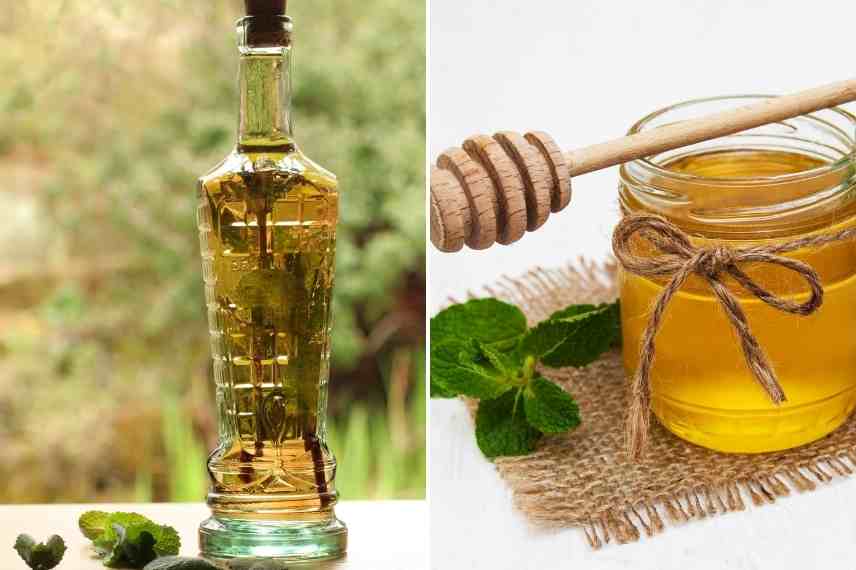
Other methods to preserve fresh mint
Making homemade mint syrup
Making your own mint syrup is very simple. For a 1 L bottle, you will need:
- about 50 fresh mint leaves
- 75 cl of water
- 500 g of sugar
These quantities can obviously be adjusted according to taste: desired intensity, syrup more or less sweet…
Pour the ingredients into a saucepan, bring to the boil and simply allow to infuse for about twenty minutes. Strain before transferring the mixture into a hermetically sealed bottle that has been cleaned, scalded and drained.
If you want to recover the green colour of commercial syrups, simply add a few drops of food colouring.
Syrup will keep for 1 month in the fridge.
Making your own mint liqueur
Making mint liqueur takes longer, but is almost as simple as making the syrup.
Ingredients:
- 1 L of fruit alcohol (or vodka or neutral spirit of your choice)
- about 50 fresh mint leaves
- 1 clove
- 500 g sugar
- 50 cl water
Again, these quantities can be adjusted to suit taste. You can also add cinnamon or lemon juice.
Place mint leaves in the alcohol to macerate for 3 weeks at room temperature. Ideally start the maceration by leaving the jar in the sun for a few hours beforehand; small droplets of condensation will begin to form, a sign that the chemistry is at work.
Heat the water with the sugar to make a syrup: bring to the boil for a few minutes until the sugar has completely dissolved, then leave to cool.
Strain the alcohol, removing the mint leaves, then transfer the alcohol and syrup into a clean hermetically sealed bottle.
Leave to macerate again for 3 weeks.
Liqueur keeps for a very long time, but its flavour may attenuate after about a year.

Mint syrup and liqueur
Keeping potted mint over winter
Finally, you can of course choose to keep a pot of fresh mint for winter, indoors, in a bright spot.
To avoid weakening the mint plant too quickly, harvest leaves as needed by cutting stems above at least two leaves, which will allow the plant to regrow well.
- Subscribe!
- Contents
































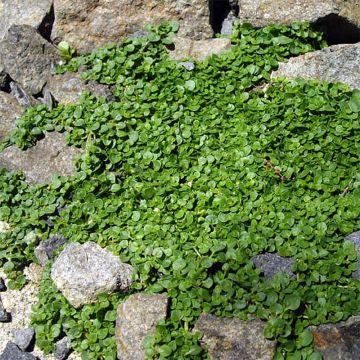
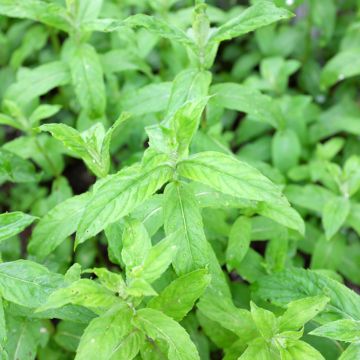

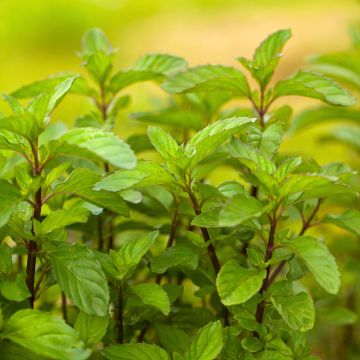
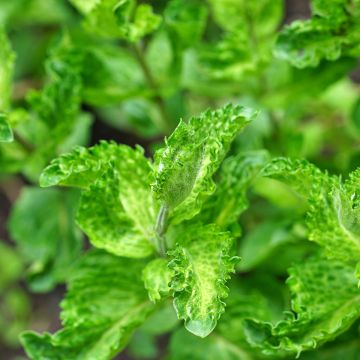
Comments